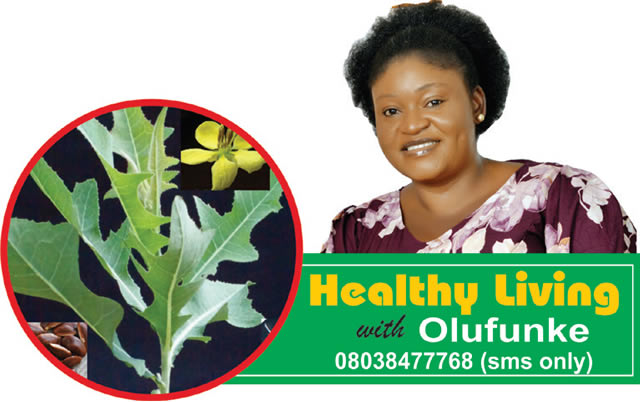Health benefits of fruits: Watermelon
Olufunke Faluyi
I have loads of questions on how to remove wax from apples. Let us talk about it.
Add white vinegar to some water and boil. When the water starts boiling, drop your apples into it and leave for 10 seconds. Bring the apples out and wipe with a towel. Then, wash with clean water.
You can slice a lime/lemon, dip it in bicarbonate of soda, rub it on apple skin, and then drop the apples in boiling water. Bring the apples out and wash them with clean water.
This week, I will be discussing watermelon. It is botanically called Citrullus lanatus and it is a flowering plant species of the Cucurbitaceae family.
With bright red flesh and little seeds embedded throughout, watermelon is a rich source of citrulline, an amino acid that may improve exercise performance.
It has antioxidants, including lycopene and cucurbitacin E, which are beneficial for health. It contains copper, biotin and vitamins A, B1, B5, B6 and C.
Watermelon is popular in indigenous systems of folk medicine and it is known to contain bioactive compounds such as cucurbitacin, triterpenes, sterols and alkaloids.
These bioactive compounds present in watermelon render numerous health benefits, such as decreasing the risk of cardiovascular disease, ageing-related ailments, obesity and various cancer-alleviating effects have been reported.
The seeds have amazing health benefits too. They are loaded with nutrients like magnesium, zinc, iron, folate and fatty acids.
They are rich in fibre, have low sugar content and also contain citrulline.
The occurrence of high arginine content in the seeds of watermelon adds to its medicinal benefits. The seeds can be eaten raw while eating the fruit, it can be roasted or ground into a powder and used with cereal flours when making bread, cakes or added to soups and stews.
They are consumed as snacks, fat binders, soup thickeners, and condiments. The seed contains 20 – 40% of a highly prized oil. As well as being edible, it is also used in cosmetics for making soap. The roasted seed can be used as a coffee substitute.
The leaf is popular in trado-medical remedies for respiratory tract infections and diabetes.
In some African cuisines, the leaves are cooked and eaten as a vegetable. The rind, which is the white part of the fruit between the pink flesh and tough green skin is not only edible, but it is a potent source of nutrients that happen to be different from the flesh. So, it is almost like two fruits in one.
Watermelon keeps you hydrated since it is mostly water.
Several plant compounds found in the fruit including lycopene and cucurbitacin E may have possible anticancer effects. Research suggests that lycopene may help lower cholesterol and blood pressure, both key in cardiovascular health.
The combination of antioxidants, lycopene and vitamin C in watermelon may help lower inflammation and oxidative damage. The fruit contains a natural pigment called beta-cryptoxanthin, which may protect your joints from inflammation.
Though it is limited, research even indicates that over time, less inflammation could help protect you from developing conditions such as osteoporosis or rheumatoid arthritis.
Lycopene’s role as an antioxidant and anti-inflammatory compound may help prevent and inhibit age-related macular degeneration.
Watermelon is the richest known dietary source of the amino acid citrulline. The highest amount is found in the white rind that surrounds the flesh.
In your body, citrulline is transformed into the essential amino acid arginine.
Both citrulline and arginine play an important role in the synthesis of nitric oxide, which helps lower blood pressure by dilating and relaxing your blood vessels.
Arginine is also important for many organs such as your lungs, kidneys, liver, and immune and reproductive systems and has been shown to facilitate wound healing. Watermelon’s libido-boosting powers also come from the amino acid citrulline.
In a study, the antidiabetic potential of watermelon leaf extract in obese diabetic rats was studied, the watermelon leaf extract treatment effectively decreased complications associated with diabetes better than metformin (a diabetes medication).
A 2014 mouse study concluded that watermelon’s diuretic action might be as effective as that of furosemide, which is a well-known diuretic.
In a 2017 study, athletes drank either half a litre of either a placebo or watermelon juice with added L-citrulline, two hours before running a half marathon race.
Those who consumed the watermelon drink reported less muscle soreness 24–72 hours after the race. Some studies have also linked lycopene intake with a lower risk of prostate cancer.
The effects of red watermelon flesh extract on male sexual behaviour were investigated using animal models; the result shows that watermelon may be useful for men with erectile dysfunction.
In a study, 33 people who are overweight or obese consumed either two cups of watermelon or low-fat cookies each day for four weeks.
The people who ate watermelon reported feeling less hungry and more satisfied for longer than those who ate the cookies.
In addition, after four weeks, those who ate watermelon had higher levels of antioxidants in their blood, lower body weight and body mass index, lower systolic blood pressure and improved waist-to-hip ratio.
Those who ate the cookies had higher levels of oxidative stress than the watermelon group.
Their blood pressure and body fat also increased. The results suggest that watermelon may be a good choice of snack for people with obesity and metabolic syndrome.
Watermelon contributes key antioxidant nutrients that support disease prevention and overall wellness, says Christina Meyer-Jax, RDN, LDN, Standard Process nutrition chair and Assistant Professor at Northwestern Health Sciences University.
Watermelon is a zero-waste food because you can eat the flesh, the rind and even the seeds. Most people stick to the sweet and juicy red or pink flesh, but the rind and seeds are edible too and they offer their own health benefits says Dawn Jackson Blatner, RDN.
In a study, the effects of the leaf extract of Citrullus lanatus on carbon tetrachloride (CCl4) induced liver damage in rats were investigated. The results obtained highlight the ability of the leaf extract of C. lanatus to ameliorate and reverse damage to the liver tissues of albino rats caused by CCl4 toxicant.
This means that watermelon leaves have hepatoprotective (liver protecting) activity.
A study titled Pharmacognostic and Antibacterial Effect of Citrullus lanatus Leaves against Selected Respiratory Tract Pathogens by S. Wapa et al justified the traditional use of Citrullus lanatus leaf extract in the treatment of respiratory tract infection caused by bacteria.
Another study titled Nutritive Values and Antioxidant Activity of Citrullus lanatus Fruit Extract by Adewale Adetutu et al concluded that the methanol extract of C. lanatus fruit exhibited substantial free radical scavenging activities.
This suggests that the fruit is an important source of natural antioxidant and this potential could be attributed to its flavonoids contents, lycopene and beta-carotene quantified in this study.
For diabetics, the rind, which is the white part is safer. If they have to consume the red part, it should be done in moderation and eaten with foods rich in healthy fats and proteins to slow down glucose absorption into the bloodstream.
Watermelon grows very well on our soil, you should consider planting your own.











